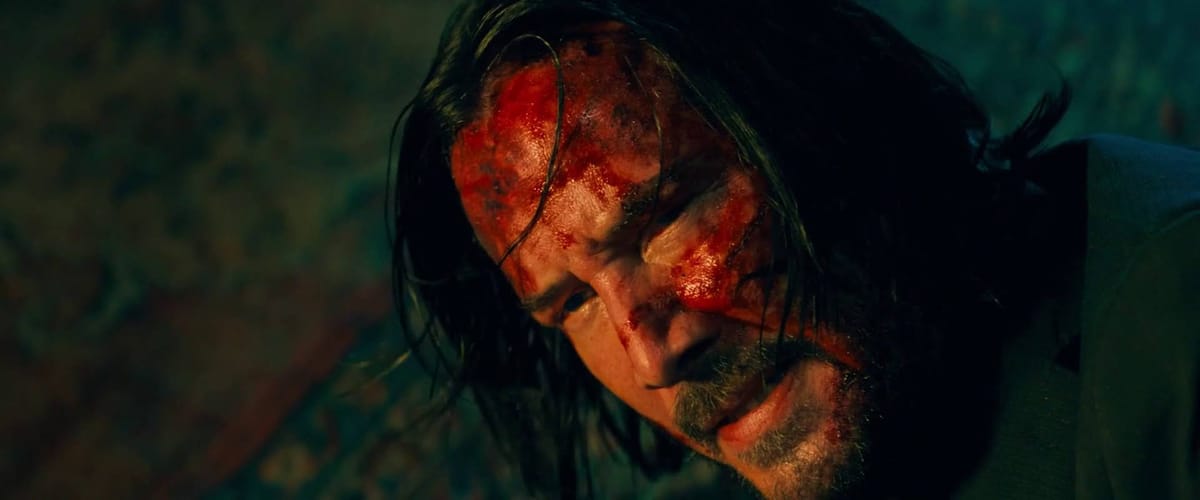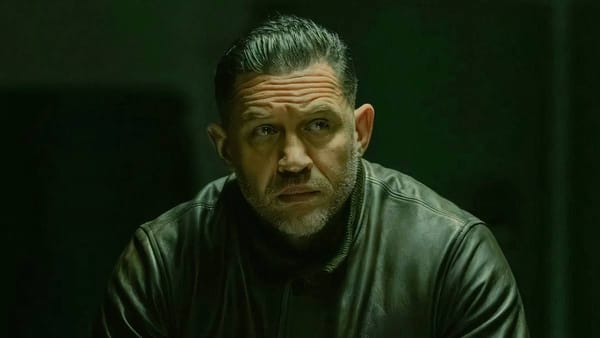Elegy for a man made of violence.

JOHN WICK: CHAPTER FOUR moves like a final movement in an action symphony — louder, broader, but also unexpectedly mournful. If the series began in intimacy and spiralled outward into architecture and ritual, this film completes the arc by returning to something elemental: the cost of being John Wick. Not the myth. The man.
From the opening frames, Reeves plays Wick with a gravity that feels earned. He is slower, heavier, but never weaker. There’s a dignity to this version of the character — a sense that every step is a negotiation with pain, and every choice is sharpened by the knowledge that he’s running out of road. The film acknowledges that weight without melodrama. Wick’s silence, always meaningful, becomes the emotional spine of the narrative: a refusal to explain what the body already knows.
The supporting cast turns JOHN WICK: CHAPTER FOUR into a global tapestry of competing philosophies, loyalties, and codes. Donnie Yen’s Caine is the standout — a blind assassin whose elegance, humour, and deep sorrow create the richest character the series has introduced since the beginning. Yen plays him like a man who has made peace with doing terrible things but not with the reason he’s forced to do them. His scenes with Reeves have a generational weight, two legends communicating in glances and timing rather than words.
Hiroyuki Sanada’s Shimazu brings a quiet nobility; his Osaka Continental is a sanctuary under siege, framed with the reverence of a temple and the fragility of a memory. Rina Sawayama’s Akira, fiercely loyal and quietly furious, gives the film a pulsing emotional throughline that hints at futures and vengeance yet to come. Scott Adkins, buried under prosthetics, somehow delivers one of the series’ most entertaining villain turns — physical, grotesque, rhythmic, and weirdly magnetic.
And then there is Shamier Anderson’s Tracker (or Mr. Nobody), who slides into the film with a curiosity and moral ambiguity the series has never quite explored before. He treats Wick not as a legend or target, but as a problem he is studying. Their dynamic becomes a subtle meditation on value — who determines it, who preserves it, and who manipulates it.
The fight sequences, once again, redefine the language of modern action. The Berlin nightclub is a swirling inferno of bodies and water and brutality. The Arc de Triomphe sequence is staged with absurd audacity, a vehicular ballet of near-misses and bone-breaking impacts. But the pièce de résistance is the overhead shot in the abandoned house — a single-take glide across rooms as Wick wields a Dragon’s Breath shotgun, each blast illuminating the choreography like a lantern. It’s bravura filmmaking, but never empty. The geography is clear. The stakes are felt. The momentum is earned.
What distinguishes JOHN WICK: CHAPTER FOUR is how it balances maximalist spectacle with genuine introspection. For the first time since the series began, Wick is given space to contemplate something other than survival. The duel at sunrise — classical, methodical, stripped of noise — becomes a reclamation of agency. A man choosing his final act rather than being shoved into another cycle of enforced loyalty.
The final scenes, quiet and sincere, give the series an ending rooted not in body counts but in dignity. Wick’s last gesture isn’t violent. It’s human. And the film trusts us enough to sit with that without undercutting it.
JOHN WICK: CHAPTER FOUR is the culmination of a decade-long experiment in action filmmaking — grand, muscular, emotionally resonant, and visually operatic. It honours what came before while daring to leave the audience with stillness instead of shock.
A masterwork of physical cinema. A farewell with weight. A myth allowed to die a man.




